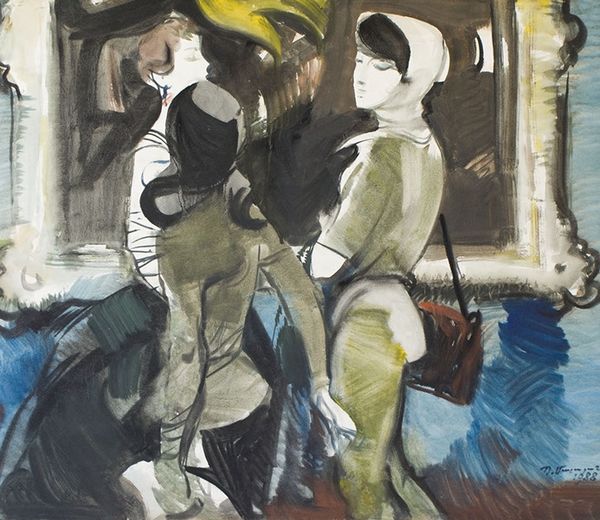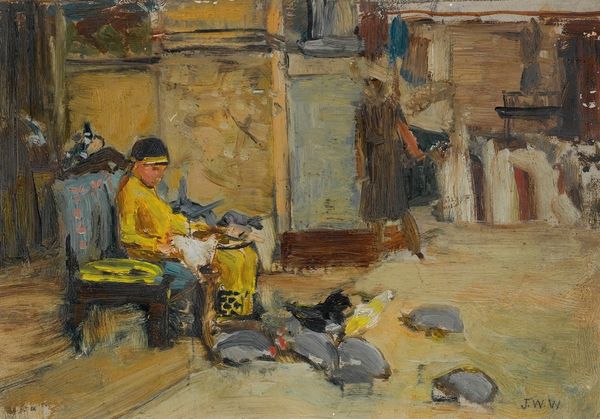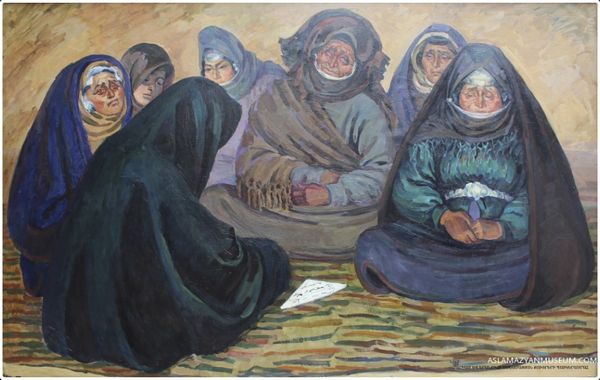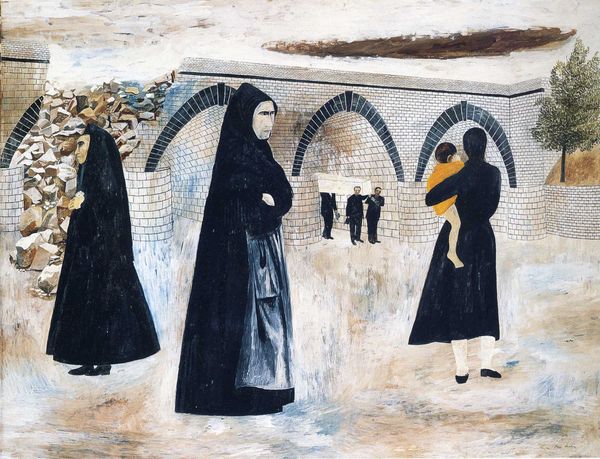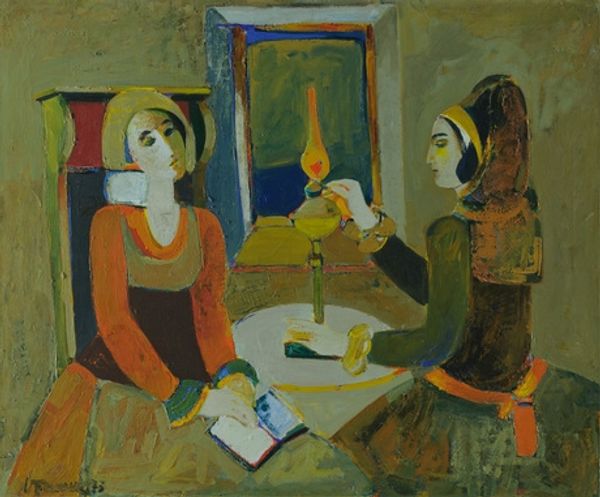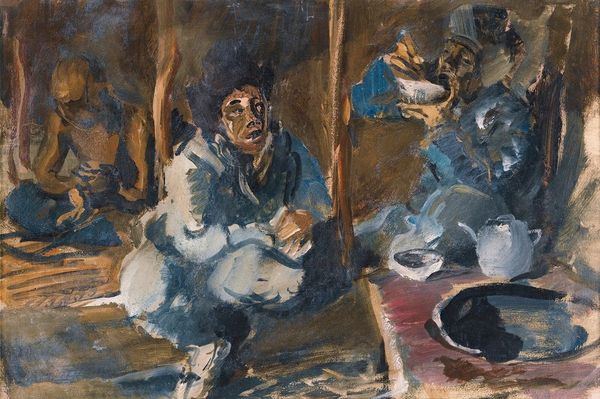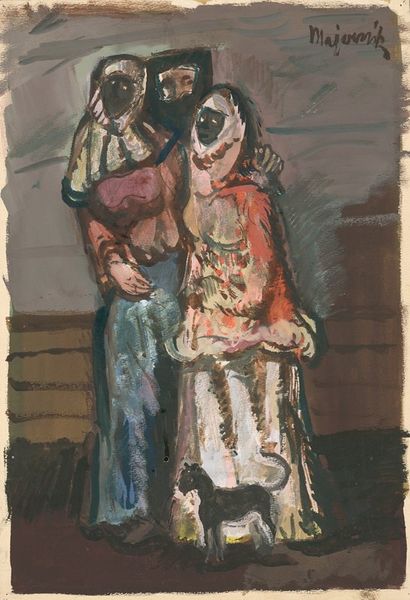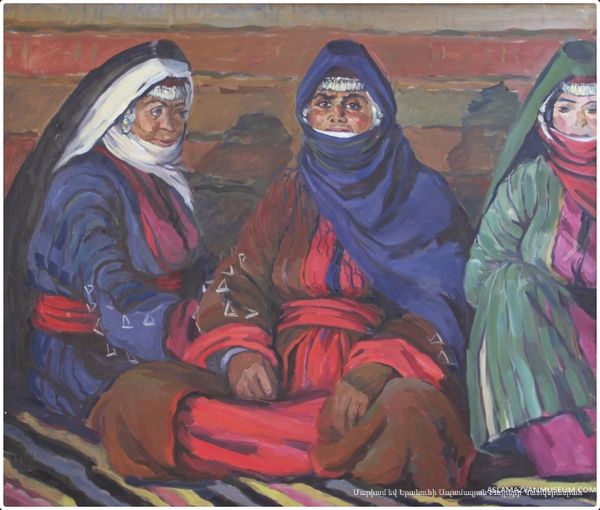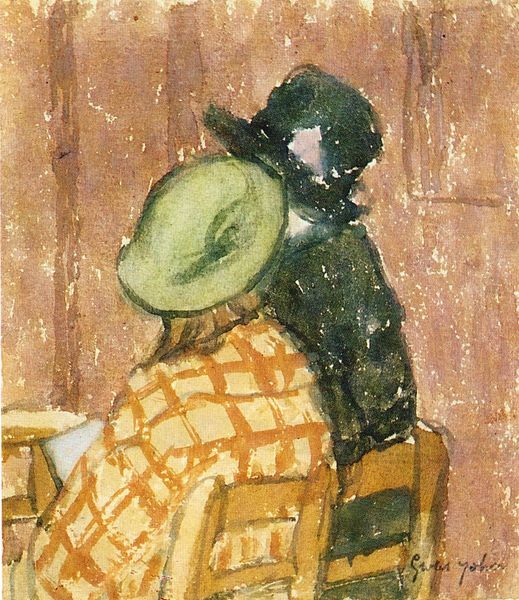
painting, oil-paint
#
portrait
#
contemporary
#
painting
#
oil-paint
#
figuration
#
oil painting
#
naive art
#
genre-painting
Copyright: Petros Malayan,Fair Use
Curator: Petros Malayan painted this genre scene, "Waiting," in 1967, using oil on canvas. The painting presents two figures, seemingly women, sitting with their belongings, possibly in a station of some sort. What strikes you first about it? Editor: The subdued color palette gives me a melancholic first impression. The loose brushwork and flattened space also contribute to this feeling. What context can you offer on the social narrative present? Curator: Malayan, though of Armenian descent, was deeply ingrained in Soviet artistic circles. He depicted scenes of everyday life that mirrored the realities—and, perhaps, some of the hardships—faced by ordinary citizens. There’s a tension here. We see an almost documentary-like approach in portraying these women, alongside this stylistic flatness which reflects an interest in naive art. Editor: Absolutely, and the materiality reinforces that simplicity. You can almost feel the viscosity of the oil paint and see how quickly the work must have been painted to catch the exact atmosphere. What about the positioning of these women and their belongings; how do you read the socio-economic commentary? Curator: Their modest bundles, their clothing… they speak to a certain class. Malayan was clearly interested in documenting the lives of working-class women within the Soviet system, emphasizing the act of waiting itself. It becomes a quiet commentary on the passage of time, perhaps highlighting the experience of waiting for opportunity, for change. Their lack of eye contact isolates them even further, suggesting perhaps themes of solitude. Editor: Waiting as a kind of labor perhaps? As women, their lived experiences, are inevitably tied to waiting, both historically and currently. What a seemingly simple scene holds so much weight. Thinking about the time of the work, do you see particular influences? Curator: There is a turn to a humanist sentiment post-Stalin; yet Malayan still doesn’t quite overtly celebrate Soviet life. The women appear subdued, anonymous even. It prompts consideration about societal changes, the everyday experience of women, but avoids falling into outright criticism. This made art such as Malayan's interesting within the official artistic structures of the time. Editor: I’m really struck by the tactile qualities and brushwork used. It’s a perfect marriage of subject and style. Curator: I agree. It leaves us reflecting on a specific historical moment and also more broadly on the theme of waiting in our own lives.
Comments
No comments
Be the first to comment and join the conversation on the ultimate creative platform.
